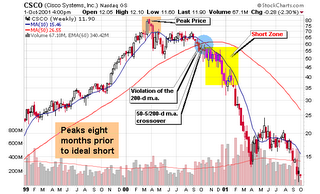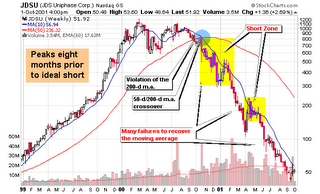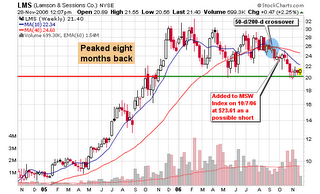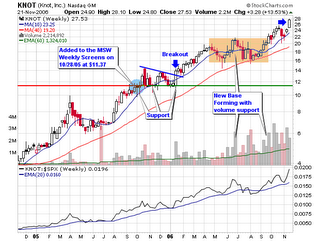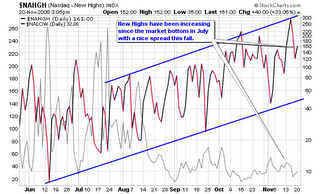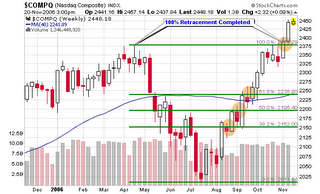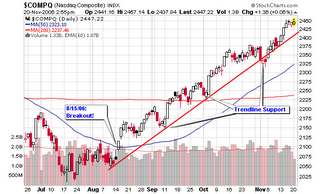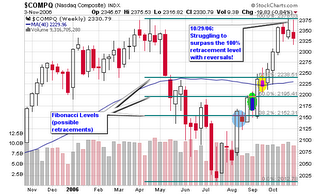Baby Boomer Bust is BULL
This article was originally written last summer but I wanted to bring it to the top of the blog after reading Bill's lastest post over at No DooDahs.
“Boomer Bust?” I Don’t Think So!
I couldn't agree more and can't wait to read his full argument!
July 14, 2006:
 I want to post about a subject that frequently appears in discussions online in recent years (especially over the past several months). It's about authors and their sheep followers that continue to predict these great depressions and crashes. I am not saying that it can't happen but their readers sure make them rich by reading most of their negative crap. What happened to the predictions from the books in the late 1970’s and early 1980’s? Read the book titles from the 1970’s and 1980’s and then read the book titles from today (listed below). Are you seeing a pattern? I didn’t go back to the 50’s or 60’s but I could find similar titles and then many more in the 1930’s. My point is: don’t believe everything you read and stop panicking by reading books from theorists (talkers, not doers). I must give credit to many of the books listed by Martin Schwartz and his book Pit Bull. I enjoyed reading it over my last vacation as it was very funny and educational (not a “how to” book).
I want to post about a subject that frequently appears in discussions online in recent years (especially over the past several months). It's about authors and their sheep followers that continue to predict these great depressions and crashes. I am not saying that it can't happen but their readers sure make them rich by reading most of their negative crap. What happened to the predictions from the books in the late 1970’s and early 1980’s? Read the book titles from the 1970’s and 1980’s and then read the book titles from today (listed below). Are you seeing a pattern? I didn’t go back to the 50’s or 60’s but I could find similar titles and then many more in the 1930’s. My point is: don’t believe everything you read and stop panicking by reading books from theorists (talkers, not doers). I must give credit to many of the books listed by Martin Schwartz and his book Pit Bull. I enjoyed reading it over my last vacation as it was very funny and educational (not a “how to” book).Theorists make money selling books that sell fear while investors and entrepreneurs make money by following their ideas with money and hedging against a possible crisis. I learn from history and history shows us that these “crisis” books will always sell during tough times. Readers eat up this garbage because most people are trapped in the rat race working their asses off just trying to stay afloat. Their attitudes are typically piss-poor and they love to read about huge negative events (especially a crash that may hurt others).
Also notice how the same authors try to write books when the market starts to go back up again. For example, Howard J Ruff was writing about the crisis in 1979 through 1982 but then started to write about how to invest as a serious investor in 1987. Guess what: he was on the wrong end of the crisis in 1982 (the tail end) and the wrong end of the boom in 1987 (crash later that year). These “fools” are always late to the party and sell millions of books to the “average” person that engrosses themselves in fear!
These people, both now and then are not very accurate, they sell garbage in my opinion and I ignore it at all costs! I just hope many of you can do the same and make decisions based on what “YOU” see and not based on book sellers! Invest for now, ignore the garbage but be prepared for worst case scenarios by taking necessary steps but don’t radically change your life based upon the writings of a few authors that probably don’t invest themselves.
Books from the Past:
Crisis Investing: Opportunities and Profits in the Coming Great Depression by Douglas Casey (Hardcover - Jul 1980)
Crisis Investing for the Rest of the 90's by Douglas Casey (Hardcover - Oct 1993) - WOW was this wrong in 1993!
What the smart money is betting on in 1985: By Doug Casey by Douglas R Casey (Unknown Binding - Jan 1, 1985)
The Coming Currency Collapse and What You Can Do About It by Jerome F. Smith (Hardcover - Sep 1980)
Profits from silver by Jerome F Smith (Unknown Binding - 1983)
How you can profit from the coming devaluation by Harry Browne (Unknown Binding - 1970)
You can profit from a monetary crisis by Harry Browne (Unknown Binding - Jan 1, 1975)
How to Prosper During the Coming Bad Years - A Crash Course on Personal and Financial Survival by Howard J. Ruff (Mass Market Paperback - 1979)
How to Prosper in the Coming Bad Years by Howard J. Ruff (Mass Market Paperback - Jul 1981)
Making money: Winning the battle for middle-class financial success by Howard J Ruff (Paperback - 1986)
Howard Ruff's crash course for the serious investor by Howard J Ruff (Unknown Binding - Jan 1, 1987)
How to Prosper During the Coming Bad Years by Howard J. Ruff (Paperback - April 1984)
Books from Today:
The Coming Collapse of the Dollar and How to Profit from It : Make a Fortune by Investing in Gold and Other Hard Assets by James Turk and John Rubino (Hardcover - Dec 28, 2004)
The Coming Economic Collapse : How You Can Thrive When Oil Costs $200 a Barrel by Stephen Leeb and Glen Strathy (Hardcover - Feb 21, 2006)
Defying the Market: Profiting in the Turbulent Post-Technology Market Boom by Stephen Leeb and Donna Leeb (Hardcover - Jun 3, 1999)
Empire of Debt : The Rise of an Epic Financial Crisis (Hardcover) by William Bonner, Addison Wiggin (November 11, 2005)
The Great Bust Ahead: The Greatest Depression in American and UK History is Just Several Short Years Away. This is your Concise Reference Guide to Understanding Why and How Best to Survive It (Paperback) by Daniel A. Arnold (November 25, 2002)
Image courtesy of http://mirrorimageorigin.collegepublisher.com/media/paper144/stills/x5jf138r.jpg
Piranha



